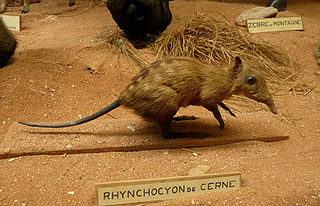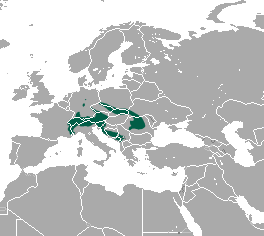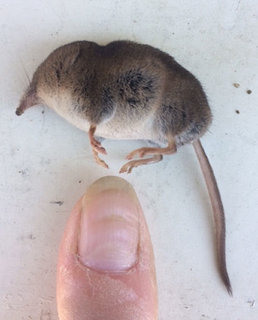
Erinaceidae is a family in the order Eulipotyphla, consisting of the hedgehogs and moonrats. Until recently, it was assigned to the order Erinaceomorpha, which has been subsumed with the paraphyletic Soricomorpha into Eulipotyphla. Eulipotyphla has been shown to be monophyletic; Soricomorpha is paraphyletic because Soricidae shared a more recent common ancestor with Erinaceidae than with other soricomorphs.

The vagrant shrew, also known as the wandering shrew, is a medium-sized North American shrew. At one time, the montane shrew and the Orizaba long-tailed shrew were considered to belong to the same species.

The short-tailed gymnure is a small mammal from the family of the Erinaceidae. The scientific name of the species is first published by Salomon Müller in 1840.

The checkered elephant shrew or checkered sengi is a species of elephant shrew in the family Macroscelididae.

Podogymnura truei, also known as the Mindanao gymnure, Mindanao moonrat, or Mindanao wood shrew, is a mammal of the family Erinaceidae. It is endemic to the Mindanao islands of the Philippines. Erinaceidae is a family of small mammals that include the gymnures, also known as the silky furred moonrats, and the hedgehogs. Animals belonging to this family are significant because they are among the oldest known placental mammals that are alive. Gymnures are relatives of hedgehogs but lack the prickly spines. Two species are categorized in the genus Podogymnura: P. aureospinula and P. truei. Both species share a close resemblance to the moonrat Echinosorex gymnura, which is commonly found on the Borneo, Sumatra, and the Malay Peninsulas.

The Sulawesi white-handed shrew or Temboan shrew is a species of mammal in the family Soricidae. It is endemic to the island of Sulawesi in Indonesia. It is a fairly common species and the population seems stable so the International Union for Conservation of Nature has assessed its conservation status as being of "least concern".

Whitaker's shrew is a species of mammal in the family Soricidae. It is found in Western Sahara, Algeria, Morocco, Tunisia. Its natural habitats are subtropical or tropical dry shrubland, rocky and sandy coasts. It is a fairly common species and the International Union for Conservation of Nature has rated its conservation status as being of "least concern".

Goodwin's broad-clawed shrew is a species of mammal in the shrew family, Soricidae. Body length and size of adults average 9.49 cm and 7.0 grams respectively making it a relatively larger shew. What distinguishes this from other shrews are its long claws.

The alpine shrew is a species of mammal in the family Soricidae. It is found in the alpine meadows and coniferous forests of central and southern European mountain ranges.

Trowbridge's shrew is a species of mammal in the family Soricidae. It is found in southern British Columbia in Canada and in Washington, Oregon, and California in the United States.

Neotetracus is a genus of gymnure that contains a single extant species, the shrew gymnure (Neotetracus sinensis) of China and Southeast Asia.

The southeastern shrew is a species of mammal in the family Soricidae. It is found in the southeastern United States.

The long-eared gymnure is a eulipotyphlan that is found in Laos. This specific type of gymnure has long ears and a long skull compared to that of others. It is also recognized for its broad forefeet, stout claws, and naked hindfeet.

The long-tailed shrew or rock shrew is a small North American shrew found in Atlantic Canada and the Northeastern United States.

















